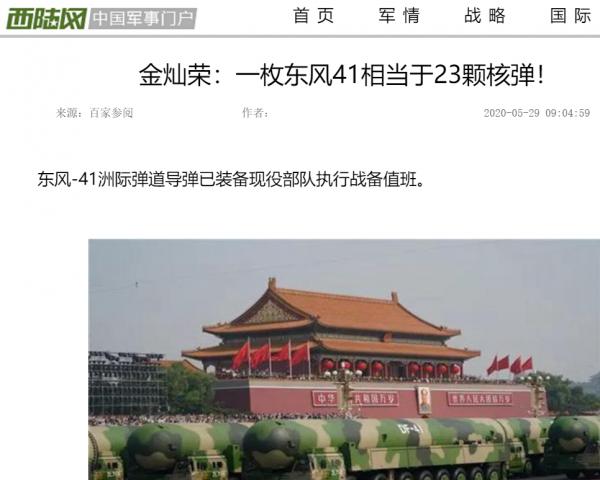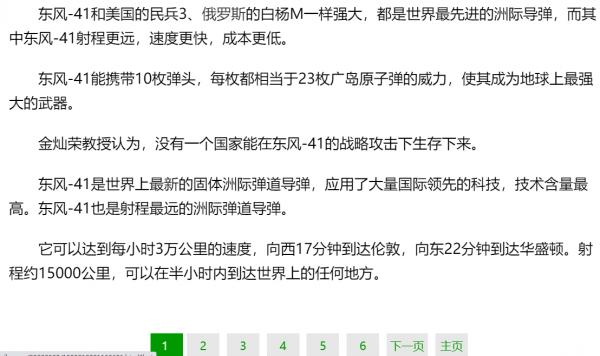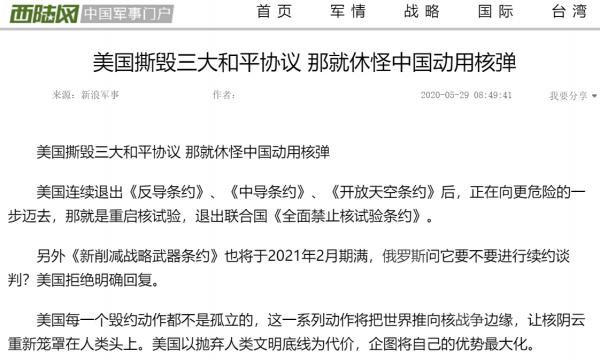| 氟利昂輻射空腔暴露天津案只能是核爆炸 |
| 送交者: Pascal 2020年05月29日01:48:57 於 [五 味 齋] 發送悄悄話 |
|
https://www.veteranstodayarchives.com/2015/09/01/vt-nuclear-education-freon-and-the-hohlraum/ by Ian Greenhalgh with Jeff SmithThe remains of a car in Tianjin. Note the completely melted aluminium radiator. One of the key pieces of evidence that allowed the experts at VT to identify the aftermath of nuclear explosions in Tianjin was the presence of large numbers of cars that had been burned out in a manner which could not have been caused by any conventional fire, but rather, is the result of radiation. In our article Confirmation – Tianjin Was Nuked we briefly covered the incineration of the radiators and cooling systems of the cars and mentioned that this was due to the presence of freon gas in the cooling systems and when stuck by the radiation of a nuclear blast, this Freon acted like the secondary core of a classic hydrogen bomb. In this article, we give you the technical information to better understand what happens when a nuclear explosion irradiates a modern car. We believe that it is important to get this information into the public domain as it will arm people with the knowledge to be able to identify the use of nuclear weapons in future and maybe this will make it harder for those that use them to get away with it. The Hohlraum. How Freon is imploded in a car air conditioning system by a neutron bomb. After a neutron and/or a classical fission bomb is detonated the expanding neutron/x-ray radiation field emitted from the device will eventually strike any object within its radiation field pattern. If any sealed container that is filled with a hydrogen based fissionable fuel such as Freon or Propane is placed within close enough proximity of the blast it will act as a black body radiation case. This radiation case or what is called a Hohlraum in nuclear physics will act as a secondary fusion container compressing and fusing the internally confined hydrogen fuel and it will ignition it producing a low level fusion reaction. The cars air conditioning system acts as a radiation case and the envelope of a secondary ignition system. If the metal casing of the cars cooling system is (acting as the pusher/tamper) made of heavy materials opaque to x-rays, and the remaining space within the radiation case (the hohlraum) is filled with light-weight materials transparent to x-rays; such as freon,as the primary fissions, large amounts of x-rays are radiated ahead of the blast and instantaneously fill the hohlraum with x-rays. Radiation trapped within the hohlraum rapidly reaches its equilibrium black-body spectrum and turns the hohlraum into a hot plasma. The radiation-driven thermalization insures that this plasma has very uniform pressure and temperature so that its effects on the casing are the same from all sides; the plasma re-radiates longer wavelength x-rays that are absorbed by the surface of the metal casing; the surface of the secondary (the pusher/tamper acting as the cars radiator) is heated to the point where it vaporizes and material is ejected from it; the material ablated from the pusher/tamper causes by reaction produces a pressure which pushes the tamper inwards, imploding the freon to very high densities. A crucial idea in Teller-Ulam method of nuclear fusion is the use of a radiation-heated low density plasma as a buffer to create very uniform driving conditions to compress the secondary equally and simultaneously form all sides. The role of the buffer (freon)is then played by thermalized blackbody radiation. The advantage of the low density filling (Freon) gas is that it allows energy from the primary blast to be stored as plasma thermal energy, which may later be re-released to the secondary to drive an ablation process. This is important as the primary (the neutron bomb) is a time-varying radiation source with a time dependence which is not optimum for adiabatic compression. Moreover, since the x-ray pulse from the primary is of relatively short duration, energy storage allows longer-sustained compression of the fusion fuel to a higher compression level.
VT核教育 —— 氟利昂和輻射空腔
Ian Greenhalgh 和 Jeff Smith 撰寫允許VT的專家識別天津核爆炸後果的關鍵證據之一是,存在大量以任何常規大火不可能引起的方式燒毀的汽車,但卻是核輻射的結果。 在我們的《確認-天津被核爆》一文中, 我們簡要介紹了汽車散熱器和冷卻系統的焚化,並提到這是由於冷卻系統中存在氟利昂氣體,並且當被核爆炸的輻射卡住時,氟利昂的行為就像是經典氫彈的次要核心。 在本文中,我們將為您提供技術信息,以更好地了解核爆炸照射在現代汽車上會發生什麼。我們認為,將這些信息公諸於眾非常重要,因為它將使人們掌握知識,將來能夠識別核武器的使用,也許這會使使用核武器的人更加難以擺脫核武器。它。 大劇院。氟利昂是如何被中子彈炸毀在汽車空調系統中的。 在中子和/或經典裂變炸彈被引爆後,從該裝置發射的膨脹中子/ x射線輻射場將最終撞擊其輻射場模式內的任何物體。如果將裝有氫氟裂變燃料(如氟利昂或丙烷)的任何密封容器放置在爆炸附近,則它將充當黑體輻射箱。這種輻射情況或核物理學中所謂的霍爾拉姆(Hohlraum)將充當次級聚變容器,壓縮並融合內部受限的氫燃料,並將其點燃,從而產生低水平的聚變反應。 汽車空調系統充當輻射箱和二次點火系統的外殼。如果汽車冷卻系統的金屬外殼(用作推動器/夯錘)是由對X射線不透明的重材料製成的,並且輻射箱內的剩餘空間(大喇叭口)被對x透明的輕量材料填充-射線 例如氟利昂,作為主要裂變,大量的X射線會在爆炸前輻射,並立即向X射線充滿大光罩。被捕集在白斑內的輻射迅速達到其平衡的黑體光譜,並將白斑變成熱等離子體。 輻射驅動的熱化過程可確保該等離子體具有非常均勻的壓力和溫度,因此其對套管的作用在各個方面都是相同的。等離子體再輻射更長波長的X射線,X射線被金屬外殼的表面吸收。輔助部件(推動器/夯錘充當汽車散熱器)的表面被加熱到蒸發的程度,並從中噴出物料;由於反作用而從推杆/搗固器燒蝕掉的材料會產生將搗固器向內推動的壓力,從而使氟利昂爆裂到很高的密度。 Teller-Ulam核聚變方法的一個關鍵思想是使用輻射加熱的低密度等離子體作為緩衝劑,以產生非常均勻的驅動條件,以均勻壓縮次級分子,同時形成所有分子。然後通過熱化黑體輻射發揮緩衝劑(氟利昂)的作用。低密度填充(Freon)氣體的優點在於,它允許將來自初級爆炸的能量存儲為等離子熱能,然後可以將其重新釋放到次級,以驅動燒蝕過程。這一點很重要,因為主要輻射源(中子彈)是隨時間變化的時變輻射源,這對於絕熱壓縮不是最佳的。此外,由於來自原邊的X射線脈衝的持續時間相對較短, Teller-Ulam方法的一個顯着之處在於,即使它基於 要將氘基燃料壓縮到其固體密度的300倍,需要150 TPa(1500兆巴)的壓力。如果推杆是由重金屬製成的,例如不鏽鋼,我們發現相應的霍爾溫度必須僅為0.4 keV。實現壓縮。 因此,驅動燒蝕壓縮所需的霍爾溫度約為0.2至2keV。這低於裂變爆炸的最高溫度,因此可以用作為此目的的能源。而且,該溫度範圍與由諸如氟利昂的低密度低Z材料製成的高嶺土填充物相容。 由於主要武器爆炸產生的強烈中子本底,裂變/聚變鏈反應在臨界狀態一開始就開始發生。因此,當新轉化的熱核燃料爆裂到其最大密度時。然後它將以X射線,中子和來自內部的額外壓縮的形式提供大量能量,足以確保將開始點燃氟利昂。 在壓縮過程中,通過將動能轉化為熱能而將燃料加熱到熱核點火。例如,該概念依賴於在爆炸燃料中心形成熱點,在該中心,材料的減速運動轉化為熱量。如果溫度足夠高,則熱點將點燃並引發熱核燃燒波,該波會傳播到外部冷燃料層。對於DF,這就是氟利昂最終變成的東西。熱點點火溫度約為10 keV。為了獲得如此高的中心溫度,內爆必須非常對稱,並且消融壓力的時間依賴性必須具有非常精確的輪廓,以使壓縮成為絕熱。但是在另一種流體動力模式下,即體積點火,它的要求要低得多。 可以通過假設時間積分中子通量等於穿過壓縮燃料邊界的聚變中子通量加上這些中子在中子中產生的(n,2n)和快裂變中子通量來估算次級子的最小熱壓縮。假設所有非聚變中子都在窄層中產生,其半徑等於壓縮氘的半徑。由於中子的數目由屈服強度給出,通量由參考值給出,因此壓縮的氘半徑大約等於2.7 cm。在圓柱幾何形狀中,這對應於幾何壓縮係數(30 / 2.7)2≈120,即將氟利昂氣體壓縮到比正常密度高約100倍的密度。 點燃氫燃料所需的主武器的最低要求產量取決於將副武器壓縮給定係數所需的能量。對於300的壓縮係數,即ρD= 53,絕熱壓縮能量總計約為3,000 MJ / kg。化學炸藥的典型能量含量為5 MJ / kg。因此,點燃氟里昂所需的最小輻射能量相當於在小於1000米距離的給定距離上約0.6 kt的高能炸藥的能量。假設一次能量到白血球等離子能量的轉換為10%或更高。 這意味着,任何爆炸力大於1kt的小型核裝置都會產生足夠的輻射能,以點燃幾乎所有儲存在適當的高密度金屬容器或散熱器系統中的氫基氣體,例如氟利昂,丙烷,丁烷等。被分解為H2或氘燃料。 A remarkable thing about the Teller-Ulam method is that the resulting compression mechanism is very simple and effective, even though it is based on a To compress a deuterium based fuel to 300 times its solid density requires a pressure of 150 TPa (1500 megabars). If the pusher is made of heavy metal such as stainless steel, we find that the corresponding hohlraum temperature has to be only on the order of 0.4 keV. to achieve compression. The hohlraum temperature needed to drive ablative compression is therefore on the order of 0.2 to 2 keV. This is lower than the maximum temperature of a fission explosion, which can therefore be used as the energy source for that purpose. Moreover, this temperature range is compatible with a hohlraum filling made of a low-density low-Z material such as freon. Because of the intense neutron background resulting from the explosion of the primary weapon a fission / fusion chain reaction starts in the hohlraum as soon as it becomes critical. Hence, when the newly transformed thermonuclear fuel is imploded to its maximum density. It will then provide, in the form of x-rays, neutrons and additional compression from within, a large amount of energy sufficient to insure that ignition of the Freon will start. Heating of the fuel to thermonuclear ignition is achieved during compression by hydrodynamic conversion of kinetic energy into thermal energy. For instance, the concept relies on the formation of a hot spot in the center of the imploding fuel where the decelerating motion of the material is converted into heat. If the temperature is high enough, the hot spot ignites and initiates a thermonuclear burn wave that propagates to the outer cold fuel layers. In the case of DF, This is what the Freon eventually turns into. The hot spot ignition temperature is about 10 keV. To obtain such high central temperatures, the implosion has to be very symmetric and the time-dependence of the ablation pressure has to have a very precise profile in order for compression to be adiabatic. But in the other hydrodynamic mode, volume ignition, it is much less demanding. In effect, provided radiation flux is high and fast enough, The minimum thermal compression of the secondary can be estimated by supposing that the time-integrated neutron flux is equal to the fusion neutron flux crossing the compressed fuel boundary, plus the (n, 2n) and fast-fission neutron fluxes produced by these neutrons in the casing, assuming that all non-fusion neutrons are produced in a narrow layer at a radius equal to the compressed deuterium radius. Since the number of neutrons is given by the yield, and the flux by reference, the compressed deuterium radius is equal to about 2.7 cm. In cylindrical geometry, this corresponds to a geometrical compression factor (30/2.7)2 ≈ 120, i.e., a compression of the freon gas to a density about 100 times higher than its normal density. The minimum required yield of a primary weapon needed to ignite the hydrogen based fuel is determined by the energy required to compress the secondary by a given factor. For compression factors of 300, i.e., ρD = 53 the adiabatic compression energies are about 3’000 MJ/kg,in total. The typical energy content of a chemical explosive is 5 MJ/kg. Hence,the minimum radiation energy required to ignite the Freon is equivalent to the energy of about 0.6 kt of high explosives at a given distance of less than 1,000 meters distance. Assuming that the conversion of primary energy into hohlraum plasma energy is 10% or better. This means that any small nuclear device greater than about 1kt in explosive power will produce enough radiation energy to ignite almost any hydrogen base gas such as freon, propane, butane etc. that is stored in a proper high density metal container or radiator system and can be split into H2 or deuterium fuel.
AUTHOR BIOGRAPHY Ian Greenhalgh is a photographer and historian with a particular interest in military history and the real causes of conflicts. His studies in history and background in the media industry have given him a keen insight into the use of mass media as a creator of conflict in the modern world.
manufactured reality and the role of intelligence services in manipulation of populations and the perception of events.
...... ...... ......
|
|
|
|
|
 |
 |
| 實用資訊 | |
|
|
|
|
| 一周點擊熱帖 | 更多>> |
|
|
|
| 一周回復熱帖 |
|
|
|
|
| 歷史上的今天:回復熱帖 |
| 2019: | 對越作戰被俘軍官何昌健自述 ZT | |
| 2019: | 稀土其實美國根本不怎麼進口。 | |
| 2018: | 一萬卡童鞋是不想以後競選總統了?有所 | |
| 2018: | 呵呵呵,又想了一下,發現我以前想得有 | |
| 2017: | 哈哈,我正在看郭的視頻,挺逗。我感覺 | |
| 2017: | 老郭控告王岐山先生貪腐,私生子女的事 | |
| 2016: | 中華崛起怎可忘記六四屠殺受害者! | |
| 2016: | 再論Republic中文翻譯的參考資料 | |
| 2015: | 紫鳥雪草們連蕨菜都不認得,還採什麼野 | |
| 2015: | 再給你們看看滿大人日本祖國的 | |





















